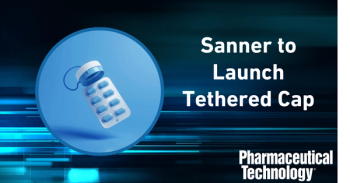
Excipient Innovation and the Regulatory Tug-of-War: Navigating Threats to Availability and Safety
Key Takeaways
- Regulatory scrutiny on traditional excipients like titanium dioxide and talc poses significant challenges, necessitating robust scientific evidence to address concerns.
- Sustainable practices in excipient production can be enhanced by using safer solvents, such as DMSO, and improving supply chain resilience.
We spoke with Nigel Langley, Global Technical Director of Life Sciences at gChem and immediate past chair of IPEC-Americas, regarding his presentation, “Challenges to the Sustained Availability of Excipients” at CPHI Frankfurt 2025, held Oct 28-30 in Germany. Langley addresses major industry concerns, including regulatory scrutiny over traditional excipients (such as titanium dioxide and talc), strategies for enhancing supply chain security and sustainability, and the urgent necessity of overcoming barriers to novel excipient innovation.
PharmTech: What is gChem exhibiting and promoting at CPHI 2025?
Langley: At CPHI this year, we will be promoting Procipient dimethyl sulfoxide, which is our high-purity, pharmaceutical-grade DMSO. Procipient has applications as both an API and an excipient. We support this product with a Type II Drug Master File in the US with the FDA, and a Type I Drug Master File in Health Canada. In addition to Procipient, we will also be promoting two other grades of DMSO in our portfolio:
1. Synthesis grade: Targeted toward API synthesis as a solvent, and also peptide synthesis, which is a growing area.
2. ACS grade: Our analytical grade, which is focused towards laboratories for reagent grades and diagnostics.
What is the most pressing regulatory shift currently threatening excipient availability?
The most pressing challenge, particularly seen through IPEC-Americas and IPEC in general, is the constant shift in deciding what to focus on next. There have been concerns regarding the safety of traditional excipients, such as titanium dioxide (TiO2). There have also been issues concerning nitrosamines and their possible connection to excipients and drug products, as well as challenges related to microplastics and PFAS (per- and polyfluoroalkyl substances). These issues, some driven from Europe and some from the US, involve various impurities. More recently in the US, there is an initiative to scrutinize and ban certain synthetic color additives. Talc is also currently "on the microscope". Dealing with these continuous issues keeps IPEC and the industry busy.
How can pharma companies better anticipate the next regulatory challenge?
It is challenging for pharma companies to know how to proactively react in these situations. Ideally, the science should prevail, and decisions should be based on the wealth of science in a particular area. However, recently, decisions have been made based on isolated scientific papers that may not be representative of the bulk of knowledge on a certain topic, leading to questions about the strength of the science cited.
A successful proactive strategy was demonstrated by the industry's response to the TiO2 concern that came from Europe. When TiO2 was banned in food, it looked like it would be banned in pharmaceutical products. If that ban had occurred, 90,000 drug products in Europe would have had to be reformulated. Many of these products, particularly generics, would likely not have been reformulated due to a lack of economic incentive, potentially leading to drug shortages. Furthermore, there is "no good alternative for TiO2," meaning reformulations would have required an inferior excipient.
The industry responded effectively by challenging the citations presented in Europe using sound science. Although the safety of TiO2 was debated (the FDA saw no issues, while certain European countries did), "common sense" ultimately prevailed. The appropriate proactive strategy is to present the facts and good science to tackle the challenge, rather than being melodramatic.
What proven strategies exist for strengthening excipient supply chains against global disruptions?
All pharma companies must consider the risks of single sourcing for raw materials, including excipients. To overcome this, supply opportunities should be provided, either by using a company that manufactures the same product at multiple global sites or by maintaining safety stock in different parts of the world to compensate for potential supply chain challenges.
Regarding sustainability, I see an opportunity for DMSO (gChem’s product) as a much safer, greener solvent alternative because it is a Class 3 solvent. This contrasts with Class 2 solvents currently used in drug synthesis and formulation, such as dimethylformamide (for API and peptide synthesis) and N-methylpyrrolidone. In terms of sustainability, there is no reason for formulators to choose more toxic Class 2 solvents in the future when a safe alternative exists, meaning sustainability can be rectified by alternative, safer materials that lead to much better patient outcomes.
Where are the best opportunities to integrate sustainable practices into excipient production without compromising performance?
Many companies are already working on sound ways of assessing their carbon footprint of manufacturing. Sustainability on raw materials sourcing is critical. This requires having excellent communication with suppliers and knowing where the material is being made and where the raw materials used by the excipient company are sourced.
The move toward safer solvents is also a key area of sustainability. In my opinion, the safer approach avoids Class 2 solvents, as they potentially face future bans. For instance, dichloromethane (a Class 2 solvent) has been banned, and dimethylformamide is now being banned in certain industries and by REACH in Europe. If there is a threat that these solvents will not be available in the future, they are not sustainable, especially given that many drug products are formulated with them.
How can novel excipients be introduced quickly while still ensuring safety and efficacy?
Novel excipients are needed now more than ever, but there are still very big barriers to their implementation. Without excipient innovation, the industry faces a major problem because drug modalities are increasingly complex, yet companies often rely on excipients that are 60, 70, or 80 years old. It is difficult to mold these older excipients into the desired functionality when what is truly needed is something designed fit for purpose.
Excipient innovation has not kept pace with drug innovation. There was hope three years ago when the Prime process was introduced by the FDA, as it offered a potential mechanism for new chemical entities used as novel excipients to be reviewed independently from the drug product submission. However, IPEC has not received confirmation from the FDA on whether this pilot program will proceed, and it is suspected to be either on hold or stopped.
To foster innovation, pharma companies need to have a much closer collaborative relationship with excipient suppliers. Suppliers should not be viewed merely as a vendor or a source of excipients. Collaboration requires early communication regarding formulation challenges and the specific need for an excipient to meet that challenge.
Academia has an important role in developing new chemical entities for future drug formulation, but the translation and commercialization of these ideas remain difficult. New materials must undergo the tox cycle and safety aspects before being adopted by a pharma company. Currently, pharma companies tend to be "first to be second," waiting for another company to successfully take a novel excipient through to completion (Phase III and drug approval). This is because a novel excipient is perceived as a significant risk; if a company already has a new API, adding a novel excipient is almost a "double risk". Much closer collaboration between the two parties is the way to combat this perceived risk.
Newsletter
Get the essential updates shaping the future of pharma manufacturing and compliance—subscribe today to Pharmaceutical Technology and never miss a breakthrough.





